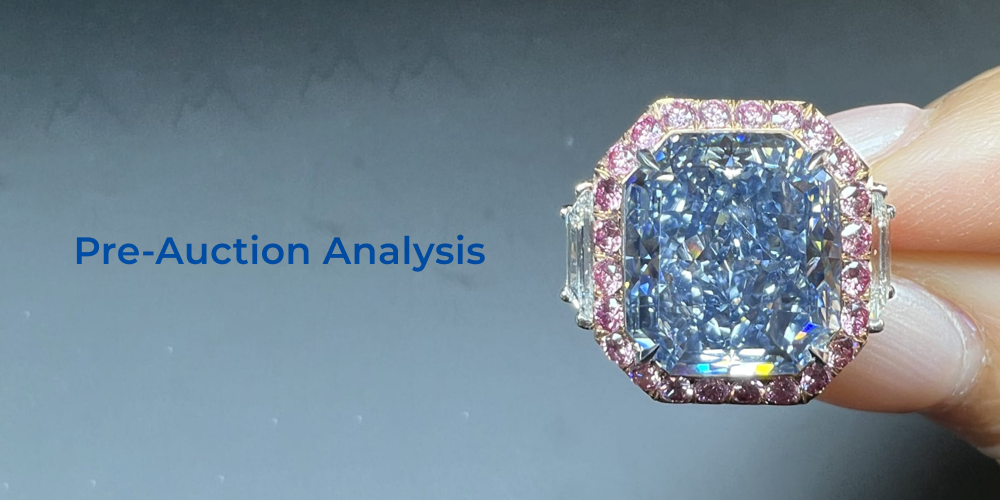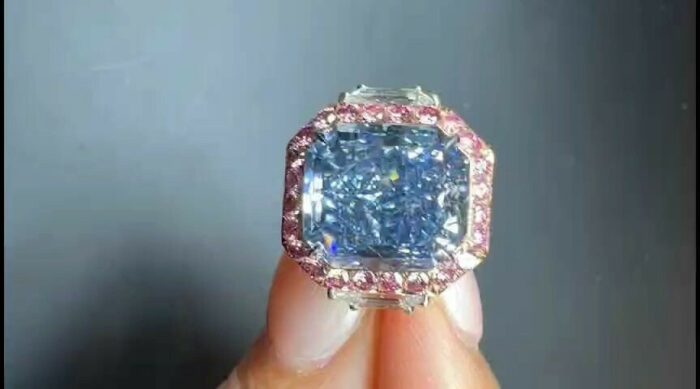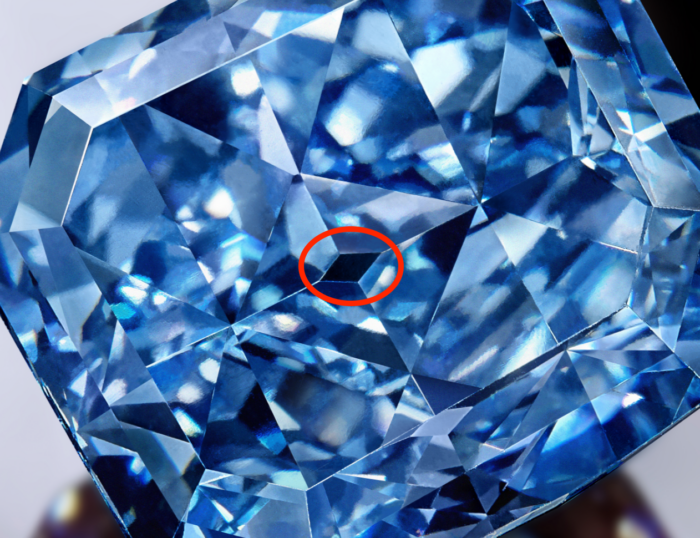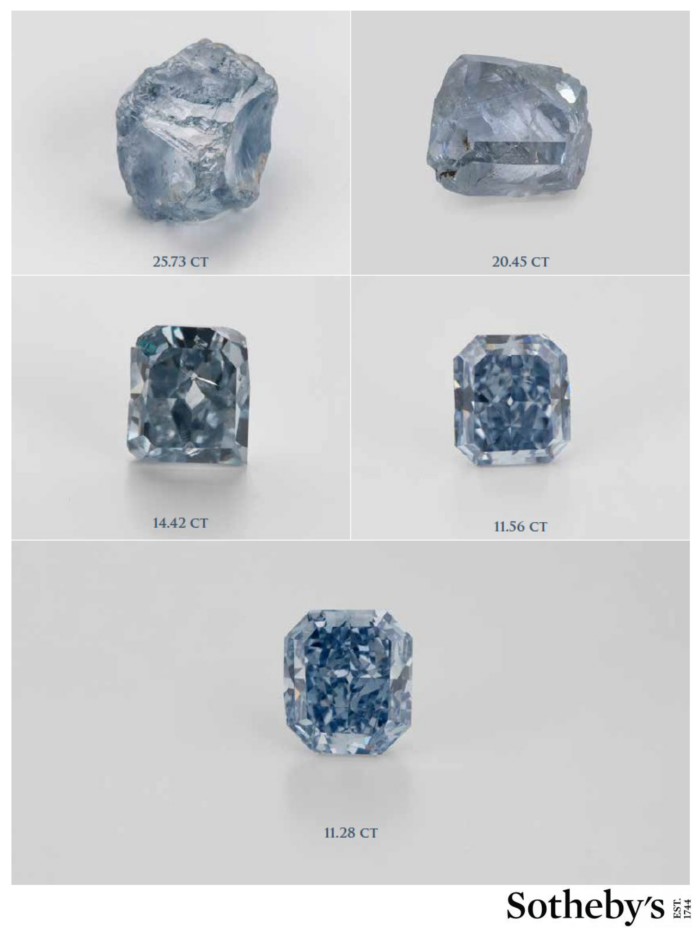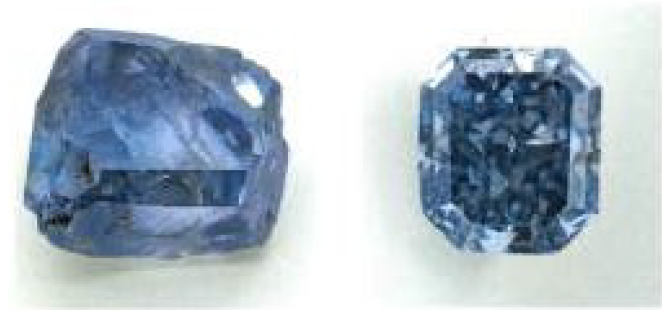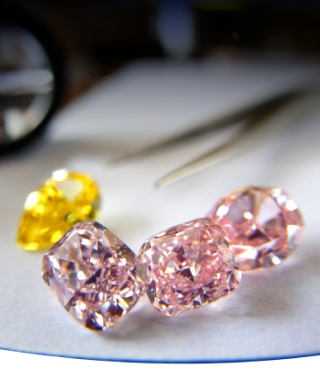The Infinite Blue
Our Sotheby’s The Infinite Blue Pre-Auction Analysis focuses on elements that are not always visible to the untrained eye. We discuss characteristics such as Inner-Grade, Color Dispersion, and Undertone – collectively termed IDU. Professionals use the IDU method intuitively when analyzing a Fancy Color Diamond. The acronym we use makes these elements easier to remember.
Members who read this analysis should see it as a valuable supplement to the GIA report. A detailed explanation of the FCRF’s grading methodology can be found at the end of this article. We recommend reviewing it closely to broaden one’s professional vocabulary for describing fancy color diamonds to clients.
Please note that we analyze and grade diamonds under LED lights and relative to their grade on the GIA report.
The Grades
We use grades 1, 2, 3, and 4, with 1 being the lowest grade. Grade “4+” is granted in rare cases and denotes stones with exceptional characteristics. Stones that receive a minimum total IDU score of 9 without a red remark pass the industry premium threshold and can be traded easily. Fancy Color Diamonds that are graded 10 or above (without a quality remark) are usually sought after by high-end jewelers and collectors.
For your convenience, we have added direct links to diamonds’ GIA reports and FCRF rarity stats.
- All images in this analysis were taken by Sotheby‘s
- All auction valuations are per-carat and listed in US Dollars.
Disclaimer
This analysis reflects the opinions of the FCRF professional team. It does not constitute a recommendation to buy or not buy a particular diamond. Buyers assume the responsibility of verifying any information with the auction house. At times, mistakes can happen in the visual analysis and report placement. Therefore, one should not rely solely on this analysis for buying purposes.
__________________________________________________________________________
(Image taken from online catalog)
(Image taken from online catalog)
(Image taken from online catalog)
Description: 11.28 ct, Fancy Vivid Blue, Radiant-cut, VS2. Rarity, GIA
Analysis: A large and rare vivid blue radiant cut diamond was unearthed from the Cullinan mine. The manner in which this diamond was cut and polished suggests that there was a prioritization to achieve the highest carat weight, potentially at the expense of some visual elements. Firstly, the step-cut crown avoids polishing the stars and kite-shaped facets on the crown, resulting in an unnecessary “Mixed-cut” shape. Secondly, the open culet (highlighted in red in image 3) is evident. Open culets in Radiant cut diamonds typically occur when the pavilion’s height doesn’t allow for optimal angles suited for a fancy color diamond. in order to avoid having an open culet. To prevent an open culet, the diamond would have needed a smaller outline, leading to a significant weight loss. Lastly, the uneven size of the four cut corners as seen in the image made by the GIA indicates some small compromises were made. Such features are less prevalent in contemporary, large rare fancy color diamonds.
The inner-grade for this vivid blue isn’t high, and the minor graining within the crystal produces a delicate veil. The color has a subtle gray undertone, but this is a typical characteristic of Type IIa blue diamonds. The colorless crown surrounding the table affects the consistency of the color dispersion when viewed face-up.
According to the Diamond’s Diary, the face-up surface corresponds to its carat weight, a significant attribute for all fancy color diamonds.
High Auction Estimation: $3,260,297 pc
Price Realized: $2,244,376 pc
Visual Assets:
Inner Grade..……………….2
Color Dispersion.………3
Undertone..…………………3
Total Visual Score….8 out of 12
__________________________________________________________________________
General
We use 1, 2, 3, 4, and 4+ to grade the three visual elements that GIA is silent about, although they impact the value dramatically.
Inner-Grade refers to the strength of color within each GIA saturation category:
Grade 1 weakest, bordering the saturation below.
Grade 2 weak (most common).
Grade 3 full-bodied color (above average).
Grade 4 very strong saturation.
Grade 4+ applies to the vivid category only, exhibiting the strongest possible saturation (rarely seen).
Undertone refers to a subtle hue influence in the body color of the stone.
For example:
A Fancy Blue Diamond with a significant gray presence in its general appearance will be graded with a low undertone grade of 1. A Fancy Blue that has no gray influence that is close to a primary blue will receive the grade, 4.
In a Pink Fancy Color Diamond, a stone with a warm undertone (such as orange or brown) will receive a low undertone grade. A pink stone with a cold undertone (such as purple) will receive a high grade.
In Yellow Fancy Color Diamonds, low foreign influence or a light orange influence will grant the stone a high undertone grade. When the yellow undertone looks like a true primary yellow, it will receive the rare grade 4+. Green and brown undertones will grant a low grade in the yellow category.
Color Dispersion relates to how well the color is dispersed in the face-up view of a Fancy Color Diamond, regardless as to whether the GIA grades the stone as even. A stone with many colorless areas will receive the grade 1, while a stone that exhibits its face-up view with no colorless patches will receive the grade 4+. Unlike the first two elements, the color dispersion is not a gemological quality and is the result of cutter proficiency.
